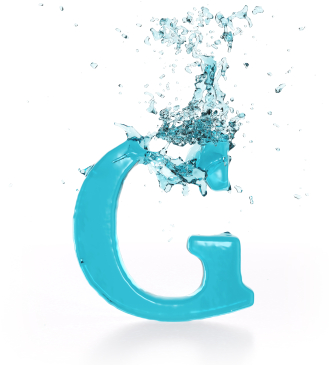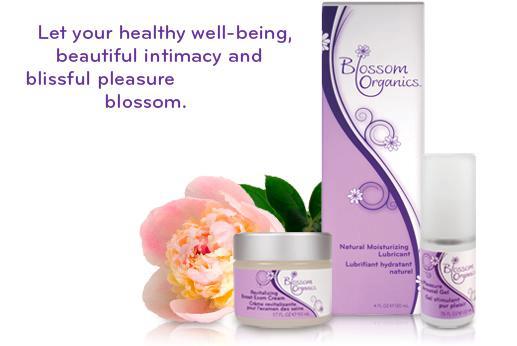Monday Review: Chase the dry away – Replens
As many as half of all women going through menopause may experience vaginal atrophy — a thinning of the vaginal tissues due at least in part to a decline in estrogen. Although vaginal atrophy can occur during anytime in a woman’s life, it’s prevalence does increase with aging. And so do the accompanying symptoms of dryness, pain during intercourse, irritation, post-intercourse bleeding and of course, a decline in sexual desire and functioning as a result. While estrogen is certainly an option and prescribed by many clinicians for this problem, it’s always nice to have non-prescription alternatives that work just as well.
One of those options is Replens®
Unlike many over the counter lubricants that are geared towards replenishing lost moisture, Replens does not offer an instant, fleeting solution to dryness just before intimacy, but rather, appears to provide lasting moisture. Consequently, its recommended use is every three days (or as needed), although it can be safely used daily.
Replens comes in a pre-filled applicator that theoretically places moisture where you need it most; deep within the vaginal canal. It doesn’t have an especially pleasant or unpleasant odor or taste, although it is a bit on the sticky side. According to the manufacturer, some women may experience ‘a residue or discharge after initial use,’ which they attribute to the elimination of dead skin cells that may build on vaginal tissue and say will dissipate over time with regular use.
Although the evidence supporting its use is a bit scant, there are some data from a very small study comparing Replens to topical estrogen therapy over 12 weeks that shows equivalent and significant improvement in moisture, fluid and vaginal elasticity as the vagina returned to a healthy pH state. These data were more recently quoted in a New England Journal of Medicine review. It appears to be safe and importantly, is compatible with natural rubber latex, polyisoprene and polyurethane condoms.
Admittedly, I am most impressed that the company that manufactures Replens also manufactures RepHresh Vaginal Gel, a product recommended/prescribed by my gynecologist that I’ve personally used on and off for years. RepHresh is indicated for maintaining a healthy vaginal pH and for Group B Step vaginal infections and is truly a fine product.
Got dry? You may want to try Replens before you turn to vaginal estrogen cream. It has a good price point – $16.99 for an 8 pack of prefilled applicators which if used as directed, lasts for about a month. The company is also offering a $3 off coupon on its website. Moreover, if you have questions about sex and intimacy that you have been dying to ask but don’t know where to turn, you can tap into an expert anonymously and free via their Facebook page.
Good company, great products, non-hormonal.
A perfecta trifecta to chase the dry away.
[Disclosure: a company representative contacted me via email and asked if I would like to try Replens. I was sent one box of product but was not reimbursed for this review.]
Read More
Wednesday Bubble: Give me a “G!!”
I am so happy about this particular unburstable bubble that I’m almost jumping for joy! Give me a G!
Yup, that elusive G spot that so many women have been talking about for centuries evidently truly exists according a new report slated to appear in the Journal of Sexual Medicine.
Say what?!!!
As many of you know, the “G spot” is a description for an area on the upper back vaginal wall that, when engorged, can significantly enhance arousal and orgasm and even allow women to ejaculate. And yet, not one scientist has been able to anatomically confirm its existence, leading most experts to characterize it as a ‘gynecologic myth.’
Well, myth no more and for this discovery, you can thank Dr. Adam Ostrzenski from the Institute of Gynecology in St. Petersburg, FL. Dr. Ostrzenski and his colleague, Dr. Hab dissected the vaginal wall layer by layer and finally established that the G spot is actually a sac structure that is located on the back membrane of the perineum (the space between the vaginal and anal opening), angled about 35° from the side border of the urethra, with its lower section situated a little over a half inch from the opening of the urethra. According the researchers, the G-spot is well defined, appears to comprised of erectile tissue and has a head, a middle and a tail.
I realize that this is all a bit highbrow and scientific. However, this discovery is important, not only for helping to inform and further what we know about what makes us tick sexually, but also because it supports earlier research that suggests that the rear of the vagina and urethra, and not just the clitoris play a role in arousal and orgasm. And this confirmation alone may ultimately help women who struggle with sexual desire as they age find other ways to address their sexual needs.
So, today, give me a G! It hits the spot…no?!
Read More
Wednesday Bubble: Coregasm?
I ran across an article earlier in the week referencing a new study demonstrating a link between exercise and orgasm. And thought: “hold on.” Yet, a deeper dive into the topic demonstrates that it might very well be true, at least for some women. And while I admit that I am not a fan of the term “coregasm,” I could very easily become a fan of sexual arousal or pleasure during exercise; the premise intrigues me as I start to wonder if there is a way to combat aging issues of sexual desire/dysfunction through certain workouts.
Anyone for an “Exercise-O?” But I digress…
Researchers from the famous Kinsey Sex Institute at the University of Indiana in Bloomington write that “orgasms that occur outside of explicitly “sexual” contexts have received much less attention in sexuality research,” and are considered “anomalies, even pathological.” One such non-sexual behavior is apparently physical exercise, noting that “in recent years, popular magazines and Internet blogs have described exercise-induced orgasms, frequently identifying them as ‘coregasms’ due to the association between the type of exercise, i.e. those that work on the core, and orgasm.” However, they also say, gratefully, that this terminology might be incorrect due to a lack of evidence linking orgasm to core muscle activity.
So, why is this important anyhow (besides the obvious)?
Orgasm is incompletely understood and for women in particular, it’s often linked to a variety of factors, including sexual arousal, environment, life stressors, partner intimacy and caring and of course, lubrication. And, in my research I’ve discovered that for some women who experience exercise-related orgasm, they may start very early before they participate in sexual activity with a partner, necessitating counseling and assistance in transferring the ability from sports to a human, if you will. Moreover, as the researchers say, given the attempts to enhance sexual arousal, perhaps this research can start to shed some light.
Consequently, they surveyed 530 women between the ages of 18 and 56 who reported experiencing exercise-induced orgasm or exercise-induced sexual pleasure (i.e. coming close to orgasm during exercise) via email messages. The results, which were published last November in Sexual and Relationship Therapy are intriguing:
- 40% or more of women reported having had experienced exercise induced orgasm or sexual pleasure during exercise 11 or more times in their lifetime
- Almost 44% said that the first time it happened, it was during abdominal exercises, and over 50% reported having an orgasm during situps or crunches within the past three months. Other types of exercise that appeared to spur on recent orgasm included weight lifting (26.5%), yoga (20%), biking or spinning (15.9%), swimming or water aerobics (17.9%), running (13.2%) and walking or hiking (9.6%)
- Many of these same exercises were reported by women who experienced sexual pleasure, including biking/spinning, sit ups/crunches, lifting weights and yoga.
So, how do women feel about these experiences? Apparently, most say that while they are happy about these experiences, those who actually experience orgasm while exercising also express feeling embarassed or self conscious, fearing discovery by others if they vocalize their pleasure. Two women* I spoke to told me that if they are alone, they rarely do anything to stop it although they do control any overt visible displays. In public, they let it go on for as long as they can without losing ‘control’ and then deliberately redirect attention to the exercise. In fact, in the study, at least a third of women in the survey in either group reported that they could control their experience.
Women who orgasm during physical activity also say that it occurs without sexual fantasies, which suggests that perhaps there is a component of orgasm that is totally unrelated to sex. Yet, there are some women who associated sexual thoughts first, noting that they are very aware how many reps or time spent exercising will bring on an orgasm.This begs the chicken/egg question: does pleasure while exercise beget adjustment of thinking beget orgasm? Moreover, some women reported being motivated to exercise to reach orgasm or experience sexual pleasure, which takes away the spontaneous aspect of any hypothesis.
Regardless, the two women I spoke with in my side research shared some advice for those of who are fortunate enough to have experienced this. If you’re new to the exercise-O, game, Natalie offers this: “it takes a bit of self-control so in the beginning, you have to figure out what’s happening (“is this what I think it is?!”), acknowledge it and then purposefully redirect your attention to your surroundings.” For the more experienced, Ashley said that women should enjoy it. “You are lucky. Once you recognize what’s happening, enjoy it until you reach that point where you NEED to vocalize or publicly display your experience.” At that point, she adds, “I highly advise a quick “oh, I’ll save it for later…” and similar to Natalie’s advice, she says to redirect your thoughts.
Ironically, both women caution that if you are exercise-O prone, to stay away from moving objects, such as biking on the street or skiing, noting that the obvious: the moment it might take to calm your parts can mean an serious accident!
The researchers caution that more study is needed, especially since women were recruited online and that there was no quality measurement tool with which to gauge questions and answers. They also say that future research might want to focus on men’s experiences with exercise induced orgasm and sexual pleasure. Moreover, the triggers of either are still unknown. Still, the fact that I was able to quickly find two women who have experienced this phenomenon tells me that there are likely a lot more out there.
I’m intrigued. This could open up an entire new world. And I would love to see more of these types of studies done in women 50 and older. Until then? I prefer the term exercise-O over coregasm. But that’s just me. And this bubble ain’t burst. How refreshing!
*Names changed to protect identities.
Read More
Wednesday Bubble: Designer What?!
 Rarely do I run across editorials in medical journals that catch my attention at the first sentence. However, this one wins my vote, not only for its candor but also for its attempt to clear the air, so to speak about ‘designer vaginas.’
Rarely do I run across editorials in medical journals that catch my attention at the first sentence. However, this one wins my vote, not only for its candor but also for its attempt to clear the air, so to speak about ‘designer vaginas.’
Designer what?
You may recall that I ran a piece in early February about vaginal rejuvenation and the promise the procedure offers to millions of women who are concerned about their aging va-jay-jays.
Hold on for one sec! You may want to reconsider getting a facelift ‘down there.’ At least according to two physicians from Yale.
Burstable? You bet!
Drs. Alexandra Pencow and Marsha Guess from Yale University School of Medicine say that the purported benefits of female genital cosmetic surgery (FGCS), namely that there is a “normal or standard in vaginal aesthetics,” or that FGCS will “result in improved sexual function” are misleading. They write (in the April issue of the journal Maturitas):
“The ‘designer vagina’ sounds like the name of a ‘Sex in the City’ episode, and may evoke a variety of responses, from enthusiasm for anything that can make the vagina more modern and user-friendly, to mistrust for unproven treatments for conditions that have not been clearly defined.”
FGCS refers to surgical procedures that modify the shape, caliber or length of the vagina and external genitals for aesthetic purposes. They include:
- Labiaplasty, to reduce labial size or corrects irregularities (if the labia are too large, elongated or assymetrical)
- Vaginoplasty or vaginal rejuvenation, to narrowsthe vagina and the vaginal entrance
- Clitoral unhooding, geared towards removing the tissue surrounding the clitoris to enhance sexual and genital sensation
- Hymenoplasty, a form of ‘revagnation,’ in which the hymen is reconstructed to mimic virginity
- G-spot amplification, i.e. injecting collagen into the vaginal wall to increase sexual satisfaction/sensitivity
The physicians write that despite the lack of clinical evidence proving benefit, these procedures have increased three-fold or more in both the U.S. and the United Kingdom. They also note that the media, talk shows, women’s magazines and the Internet combined have worked to perpetuate myths about these procedures without properly explaining the reasons why they might be done other than aesthetics. Procedures such as the ones described above can be invaluable following cancer, trauma or pelvic organ prolapse to improve life quality and treat certain symptoms.
Still, when it comes to aesthetics, there is a lack of standards for these procedures to define proper follow up and outcomes. Even more important is the fact that there is no true definition of “normal.” How then does a woman who desires smaller labia or an enhanced vagina temper her expectations?
Sexuality, sexual desire and sexual satisfaction are multifacted and personal, influenced by life stressors, environment, mood, self-esteem, hormones, personality and social and partner support. The new ‘normal’ isn’t supposed to be defined by the medical community and the media, is it? Just as the Menopause Industrial Complex wants to sell you on HRT, so apparently do the Vaginal Patrol wish to convince you that your parts ‘down under’ need a nip, tuck, an ‘Occupy,’ if you will.
Designer vaginas? Evidently, they’re here to stay. The benefits, however? Hard to say.
Read MoreBlossom into…pleasure
Freud started it; the driving force that makes us fulfill our most primitive urges, the pleasure principle. I’d like to think of it in a more positive light and I’m happy to say that the new line of intimate care products by Blossom Organics has my attention in the most wonderful way possible.
As we age and estrogen starts to wane, certain challenges may arise in our private areas, challenges like thinning vaginal tissue and lubrication issues. And although many things undoubtedly factor into and drive sexual desire, things like intimacy, our surroundings, daily stressors, our partners, our sense of purpose, vaginal dryness is real and for some women, may call for a little help. Mind you, I still don’t ascribe to the ‘silent suffering’ message that arose late 2010 when the International Menopause Society teamed up with Novo Nordisk to promote hormone therapy. But I do believe that knowing one’s options is critical to overall wellbeing and sexual health. Consequently, when the CEO of Blossom Organics wrote to ask me if I’d like to try their products, I thought to myself, ‘sure, why not?”
As I’ve gotten older, I’m finding that I am less inclined to use skincare and other products that are formulated with harsh chemicals. I’ve always had sensitive skin but as my hormones have changed, so have my skin tone, texture and reactions. Consequently, although I love trying new things, I typically end up with the old, especially when it comes to my more intimate areas. And while the organic label doesn’t always mean “better,” it often causes me to read the label to see exactly what that means.
In the case of Blossom Organics, it means intimacy without chemicals that may screw with your skin’s pH or cause other unpleasant reactions, chemicals such as parabens, artificial dyes, flavorings or fragrances. This doesn’t mean, however, that the products are entirely scent-free. In fact, I found the Revitalizing Breast Exam Cream, which contains coconut and almond milks and cocoa, reminded me of a something from my childhood that I just can’t put my finger on, an odor that doesn’t appeal in the least. And the Warm Sensation Moisturizing Lubricant appears to rely on organic peppermint, at least in part, to provide the warming sensation, a substance that might not please everyone’s palate. Still, I think that the line is diverse enough to offer something for everyone. If the warm moisturizing lubricant or Warm Sensation Oil isn’t your thing, there’s an alternative: the Natural Moisturizing Lubricant is relatively odorless and gentle enough for everyday dryness and not just the dryness that occurs during intimacy.
The one are where Blossom Organics appears to have taken the wrong turn is with their Pure Pleasure Arousal Gel, which the product insert claims “will exhilarate your senses and heighten your sexual pleasure.” Let’s get this straight: burning does not equate to ectasy. I have the same issue with Blossom’s arousal gel as I did with Zestra; a hunka hunka burning love makes me want to run screaming in the other direction. That said, however, Blossom Organics’ product still wins in the scent department in comparison to this particular competitor.
Overall, I give Blossom Organics a 4.5 out of 5 for variety, ingredients, pH balance, packaging and appeal. Moreover, their price point is reasonable, depending on which product you choose (a quick search on Drugstore.com yielded a range of $10 to $40). Most are safe for use with latex as well, which bodes well for solo pleasure and condoms.
Next time you feel the need, you may want to take your pleasure the Blossom route. It’s nice to see a dedication to female-friendly and attention to pH and truly natural.
[Disclaimer: I was not offered nor did I accept compensation for this review. However, the company did provide me with product samples for my personal use.]
Read More
Sexual desire, age and a whole lotta debunking…
 I can’t tell you the number of times I’ve stumbled across studies or articles about sexual desire. She does, she doesn’t, he does, it doesn’t, take this pill, patch, supplement, eat this food, wear this article of clothing, blah blah blah. Guess what? A lot of it is in your head (or your environment). No really! At least if you are a woman. Granted, waning hormones, namely estrogen, will likely affect vaginal dryness, pliancy and libido, at least to a certain extent. But there is a whole body of literature that points to the importance of the value of, and satisfaction with, partner relationships.
I can’t tell you the number of times I’ve stumbled across studies or articles about sexual desire. She does, she doesn’t, he does, it doesn’t, take this pill, patch, supplement, eat this food, wear this article of clothing, blah blah blah. Guess what? A lot of it is in your head (or your environment). No really! At least if you are a woman. Granted, waning hormones, namely estrogen, will likely affect vaginal dryness, pliancy and libido, at least to a certain extent. But there is a whole body of literature that points to the importance of the value of, and satisfaction with, partner relationships.
I’ve been writing about sexual desire and sexual dysfunction since I started this blog four years ago. And I continue to be frustrated by the number of solutions and panaceas that overlook integral factors like emotions and intimacy. Consequently, I was truly happy to run across another piece of evidence demonstrating the importance of these factors. This time, researchers looked at a cohort of over 800 women who were as young as 40 and as old as 100 and asked them a number of questions about their emotional health, sexual activity and menopausal status. The results? 90% reported that they were in good health, and about half had had sexual activity within a month of being surveyed, with or without a partner. Notably, a large percentage of these women were using hormones.
However, while a third of women reported that they never or almost never felt sexual desire and a third reported having low sexual desire, most of the women who were sexually active indicated that emotional closeness with their partners was key and in fact, was associated with more frequent arousal, lubrication and orgasm. And, guess what? Although aging has often been thought to be a harbinger of low sexual satisfaction (or activity, for that matter), the percentage of women who reported being sexually satisfied actually increased with age, with about half of women older than 80 reporting that they were always or almost always satisfied! Moreover, these older women also had the same degree of orgasm satisfaction as their younger peers!
One of the study’s most important findings was the fact that sexual activity was not always the litmus for sexual satisfaction, and that emotional and physical closeness were almost equally if not more important. Indeed, lead researcher Dr. Susan Trompeter notes that women in the study “who were not sexually active may have achieved sexual satisfaction through touching, caressing or other intimacies developed over the course of a long relationship” adding that “emotional and physical closeness to the partner may be more important than experiencing orgasm.”
Clearly, this research highlights the need to focus on sexual satisfaction rather than sexual dysfunction or limitations to what is commonly perceived as sexual activity. By ignoring intimacy and partner relationships, we do a huge disservice to women. Moreover, it is certainly refreshing to know that it often gets better, not worse over time.
Read More










